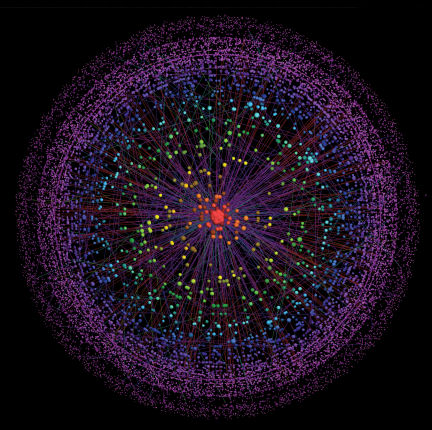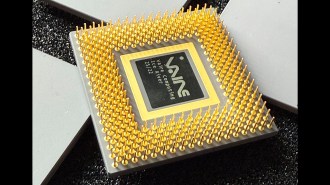- More than 2 years ago
After enlisting the help of thousands of volunteers to track how digital information weaves around the world, researchers can offer a new simile: The Internet is like a medusa jellyfish. It has a dense core surrounded by a highly connected body, from which tentacles dangle.

Because the Internet has grown haphazardly, its structure has been mysterious. It began when universities, government agencies, and a few companies linked their internal computer networks to share information. New groups have kept joining ever since, with no central authority organizing the process. An e-mail sent today may pass through as many as 30 subnetworks before reaching its destination.
To map the physical structure of the Internet, researchers send packets of information as probes to various target locations. The probes report back on the subnetworks they pass through. Until now, most such probes have been limited by being launched from a small number of sites, usually universities in the United States. Data from the probes emphasize links close to the starting sites and miss links between remote sites. The resulting distortion was so great that “there was a growing opinion before [the new] study that you really couldn’t measure the Internet,” says Scott Kirkpatrick of the Hebrew University in Jerusalem.
To overcome the bias in the older studies, Kirkpatrick and his colleagues recruited volunteers to install software that would send out probes from more than 12,000 computers worldwide.
The researchers describe the Internet as being like a jellyfish because they found that it has three layers. Forming the core are the 100 or so most tightly connected subnetworks, including groups such as Google and AT&T Worldnet. The rest of the jellyfish’s body consists of a much larger group of subnetworks that are highly connected to one another and to the core. The remaining subnetworks, about 20 percent of the total, can communicate with the outside world only by passing information through the core. They form the jellyfish’s tentacles. The findings appear in the July 3 Proceedings of the National Academy of Sciences.
Previous maps had suggested a somewhat similar structure but had sliced the Internet differently, identifying the most important links in the network as those that connect to the greatest number of subnetworks.
The new effort instead ranked each subnetwork by counting the number of routes connecting it to the core of the Internet. The resulting map has a larger number of subnetworks, especially non–U.S. sites, in its core. It also shows that 80 percent of subnetworks can communicate with each other through links that don’t pass through the core, suggesting that the Internet is less vulnerable to outages or attacks than researchers had previously thought.
The new method may hint at properties fundamental to many different kinds of networks, says Alessandro Vespignani of Indiana University in Bloomington. Preliminary work shows that networks as diverse as interacting proteins and airline traffic have similar structures under this analysis. “You see a universality that is puzzling and also exciting,” he says.







